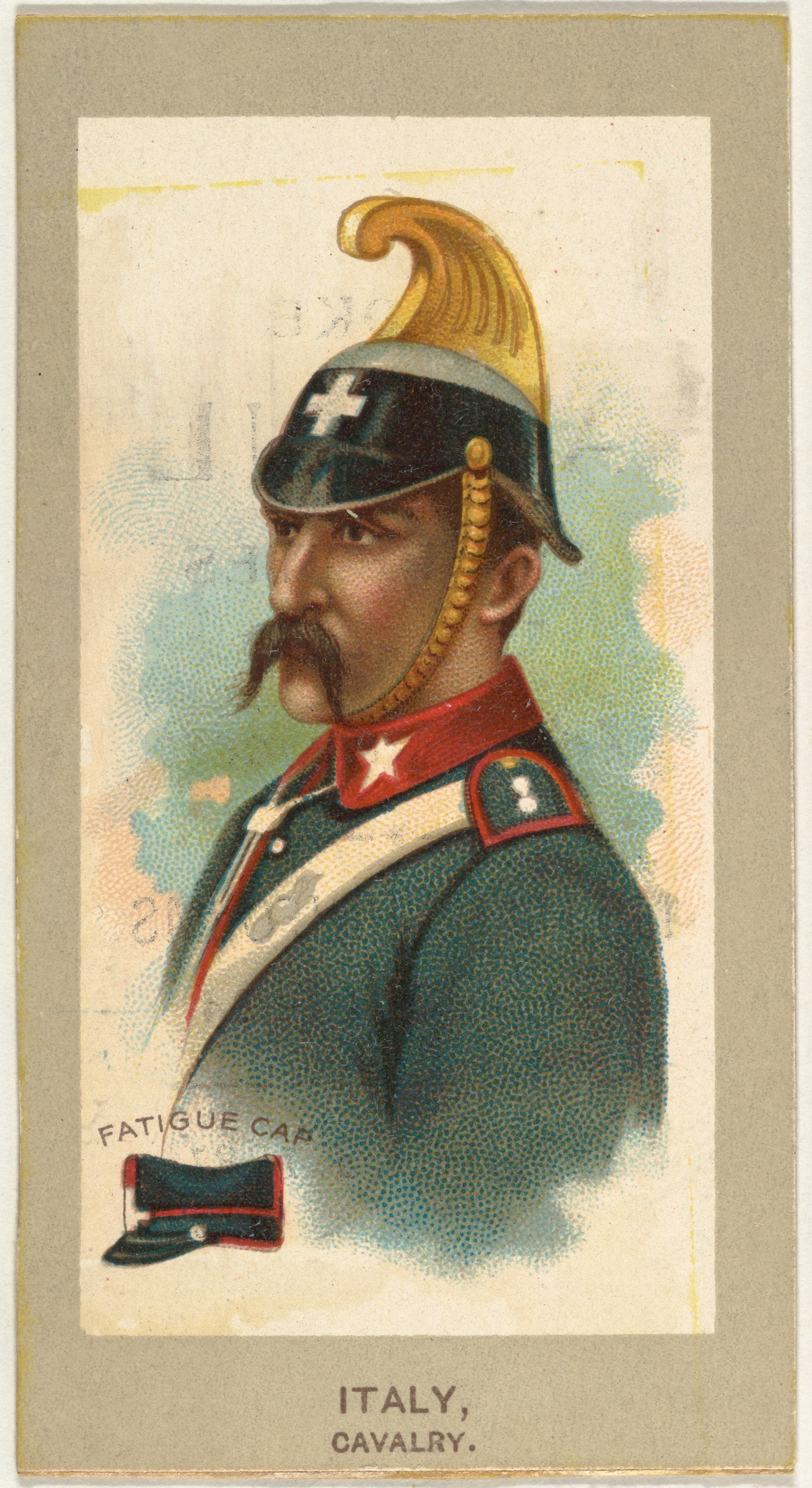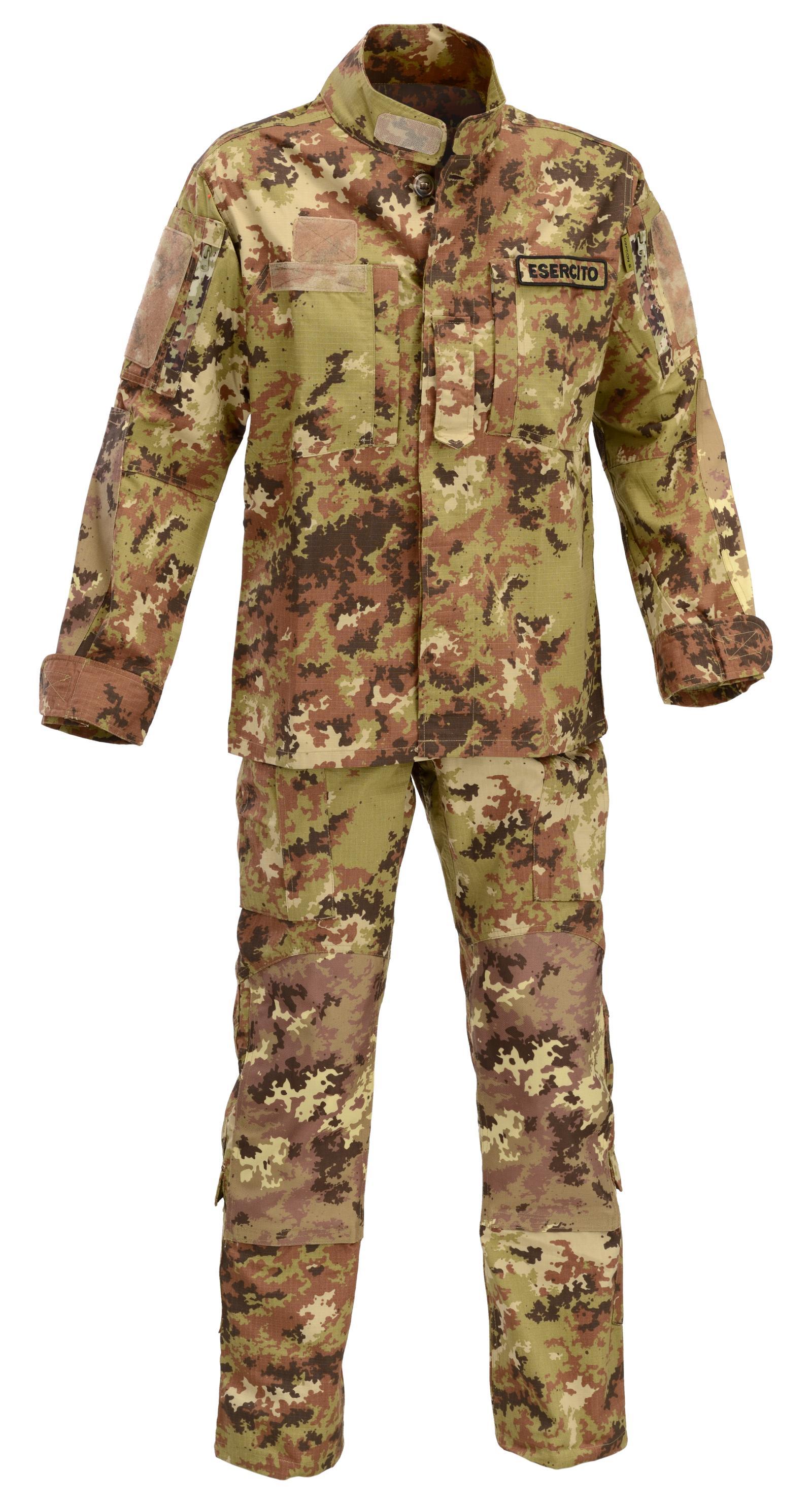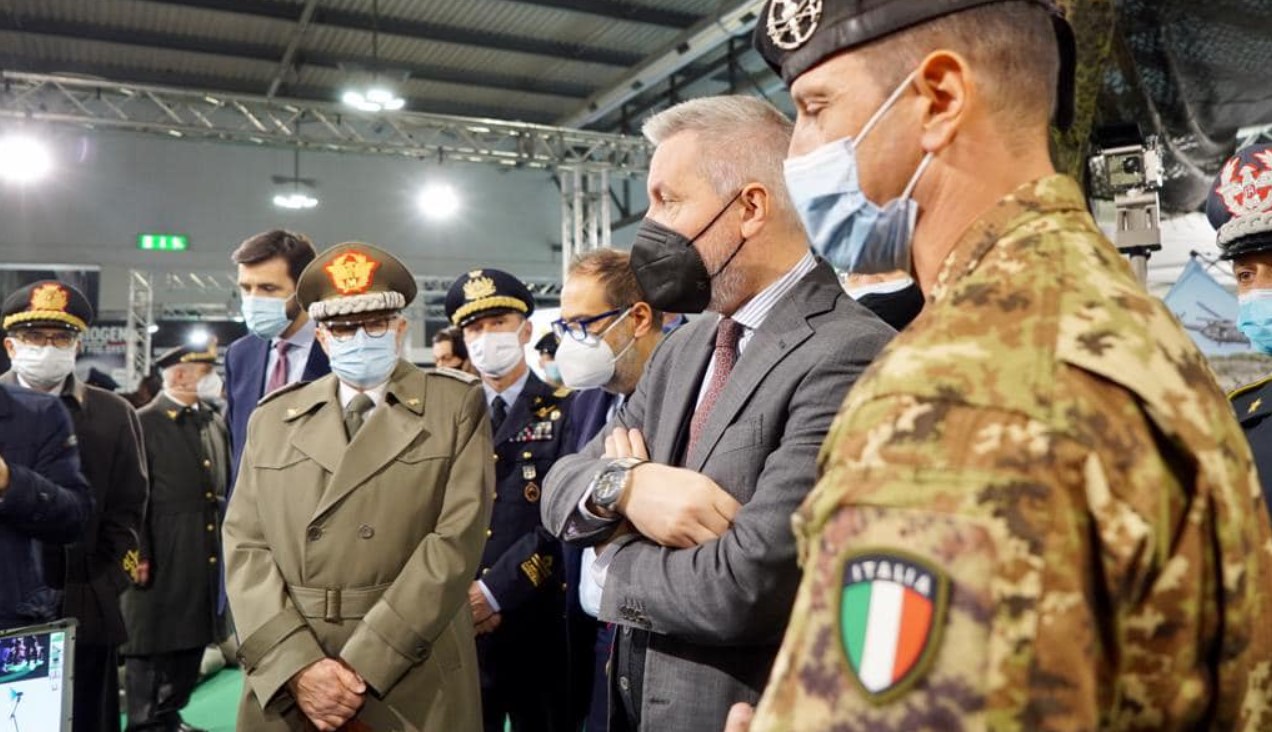Italy Military Uniform - The M1929 Tenda Telo (tent cloth) served both as a poncho and could be assembled with other telos into a tent. The telo was a square cloth made from cotton duck material, printed with a camouflage pattern on one side. The telo has an array
of buttons and buttonholes for connecting multiple telos, and the necessary poles and ropes. No other rain gear was provided to the soldier. the ranks on the cuff confirm the WW1 era (by design) and indicate the rank of Major, confirming this we have the jacket with pockets that was supplied only to the officers as the troops were without them.
Italy Military Uniform

Rank of WW1 Italian Army (In Italian) I am a cataloger at an auction house and would like to accurately describe the time period and uniform in the photo. I am also intrigued by the idea that the person in the photograph may have been assigned the female gender at birth but was living a different
Dress Uniform
lifestyle and perhaps passing as a cis gender man to serve in the army, although I am aware that the photos may have just been taken for fun. Tropical M40 Regio Esercito uniforms were made in the same cut as the M40 g-v uniform, using khaki cotton fabric instead of wool. Rank, insignia, mostrini, etc., were the same. A tropical helmet (casco) was generally issued instead of the
steel helmet. The casco was light-weight, comfortable to wear, and gave protected the wearer from the heat, but didn't offer any ballistic protection. A tricolor in the Italian national colors with a brass fregio was worn on the front of the
casco. Variations Like most other armies, a g-v or black tie (cravatta) completed the uniform for dress or special occasions. A white shirt and a g-v service cap with the unit fregio on the front could be worn to complete the look. White gloves (guinti)

were worn if the soldier was part of an honor guard. One of the dated features of the uniform was the need to wear puttees (mollettiere). These are long g-v wool strips cut in such a way as to be wrapped around the lower leg (calf) below the pants. Successfully wrapping puttees takes practice.
Jeff Reader
If not done correctly, the puttees tend to become loose and unwind during wear. The Italian soldiers wore puttees throughout the war, long after most major armies had abandoned them for long pants and high boots. Some specialty units wore leather gaiters (gambali);
some Alpini (mountain) troops wore high wool socks. Images, videos and other multimedia published on comandosupremo.com qualify as Fair Use under U.S. copyright law. USC Title 17. Section 107 specifies usage of copyright material falls under Fair Use when it is applied for criticism, comment, teaching and reporting,
. Jeff is a retired military officer whose studies/researches the Italian military since the 1980s. Jeff has collected various period military manuals and other documents, as well as many of the works published by the Ufficio Storico of the Stato Maggiore Esercito (USS
understand the role and effectiveness of the Italian military during WW2. The tunic collar between 1933 and 1937 was in the branch color (black, red, blue, etc.). After 1937, the collar was in the same g-v material as the tunic. Branch/specialty insignia, called mostrine, was worn on the

The M Service Field Uniform
collar. The mostrini identified unit of assignment and specialty (infantry, armor, technical, etc.) in a complex system of shapes and colors. An aluminum star for the House of Savoia was worn on the lower part of the mostrine. Rank was worn
on the center of the sleeves between the top of the shoulder and the elbow. In 1940, smaller rank insignia was adopted, worn in the same manner. The undress cap was the M35 bustina. This was an envelope design (similar to the US overseas cap) but had a front peak and ear flaps. The front brim was normally worn folded up. A unit insignia (fregio) was sewn to the brim
The brim was rarely folded down. The ear flaps cover the ears and part of the back of the head when folded down and buttoned under the chin. When not in use, the flaps were folded over the top of the bustina and secured using the ..
same buttons. The pants (pantaloni) were a breeches style, with the pant leg bloused (tied) under the knee. The pants were g-v wool, baggy in design. They had two slash front pockets and one rear slash pocket.
In The Field
without a flap. The pants had a high waist (level with the belly button) and worn with a belt. No watch pocket was provided. In all, the Italian service uniform was both distinctive and striking. The very functional bustina and the open-collar belted tunic made for a very modern appearance. This was counterbalanced by the old-style pants and puttees. This combination gave the Italian soldier a

unique appearance from other armies during the war. The M40 overcoat was made from the same g-v wool as the uniform. There was a dismounted and mounted version, distinguished mainly by the size of the collar and cut of the coat skirts. The dismounted version had a smaller, angular collar and straight skirts.
The mounted had a large, rounded collar and the skirts flared from the waist. Both were single-breasted with two large slit hip pockets, closed by a straight flap. No button was provided to secure the flap. There were two small slit breast pockets
without flaps, closed by a small button. These pockets were unusual, as the pocket opening was vertical, not horizontal. if(typeof ez_ad_units != 'undefined'){ez_ad_units.push([[250,250],'comandosupremo_com-large-mobile -banner-2','ezslot_13',110,'0','0'])};__ez_fad_position('div-gpt-ad-comandosupremo_com-large-mobile-banner-2-0'); 1These are three silver gelatin photographs, each measuring 9 x 6 3/4 inches. I have a total of five photos: three different images, two are repeats. In two of the images, the subject is posing with a woman in a dress.
Basic Royal Army Uniforms
Any help would be greatly appreciated! Two main versions of the basic uniform existed: continental/metropolitan (worn in Europe), and overseas (mainly worn in the Italian colonies and other hot climates). Versions of the uniform are the M33, M37, and M40. These only vary in
small details. The M40 version was the most common, so it is the one described here. The shirt (camicia) was either in cotton or wool (summer or winter) in the g-v color. It was a pull-over design, with the neck closed by either a zipper (until 1939) or by small buttons (two to four)

The collar had three points; two in the front at the collar ends, and one in the back in the middle of the collar. Earlier shirts had a small button fastening the rear point, but this was discontinued during the war. The cotton shirt.
lacked pockets; the wool shirt had two pleated breast patch pockets closed by scalloped flaps.if(typeof ez_ad_units != 'undefined'){ez_ad_units.push([[300,250],'comandosupremo_com-box-4','ezslot_8',105 ,'0','0'])};__ez_fad_position('div-gpt-ad-comandosupremo_com-box-4-0'); The attached shoulder straps were of the same material and fixed with one small button. The large straight cuffs could be rolled down over the hands for protection. A small button on the back of the sleeve secures the cuffs when not being used in this manner.
No mostrini was worn on the collar, only large size aluminum stars. The WWII service uniform for soldiers was introduced in 1933 as part of the reforms of General Baistrocchi. The uniform was progressive in many areas but still retained some features from the 1909 uniform. The uniform was made in wool in the Italian grigio-verde (g-v
) color (bluish green-grey). The initially painted wood buttons were replaced by g-v Bakelite in the later years. Like most nations, Italy simplified the design of Regio Esercito uniforms during the war to ease production time and costs.
The M1912 boots were an ankle boot, laced, with a heel and toe cap. The boots were hob-nailed but didn't use heel or toe plates. While the general rule of thumb was blackened boots were worn on the continent and natural (

brown) boots were worn overseas, both were worn anywhere. Socks were worn with these boots but had an unusual design. The sock was normal but left the toes uncovered (a strap between the big and second toe held the sock in place).
small square cloth was folded over the toes to cover them. If you enjoy collecting these World War II military apparel, custom military badges are a popular choice as a gift or as an addition to your cap or badge collection. The perfect custom pin badges from Pinbadges.CO to show off your love for the military.
Personalized military gift with customizable themes including all six branches of the military (Army, Coast Guard, Marines, Navy, Air Force, and Space Force) and their reserves (National Guard and Air National Guard ). Their service and sacrifices are priceless, and
any of these gifts is the perfect way to honor and commemorate all they have done for our country. Specialty insignia (machine gunner, skier, driver, etc.) was worn on the left sleeve immediately below the rank. Awards and service ribbons were worn above the left breast pocket, normally sewn onto the tunic. Specialty badges and other pin-on medal
insignia were worn on either breast pocket according to the award.if(typeof ez_ad_units != 'undefined'){ez_ad_units.push([[300,250],'comandosupremo_com-medrectangle-4','ezslot_2',104,'0', '0'])};__ez_fad_position('div-gpt-ad-comandosupremo_com-medrectangle-4-0');
italian military uniform ww2, wwi italian uniforms, italian military uniforms ww1, italian air force uniform, italian army uniform, french military uniforms for sale, italy military police uniform, us military uniforms pictures